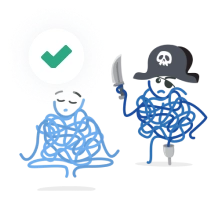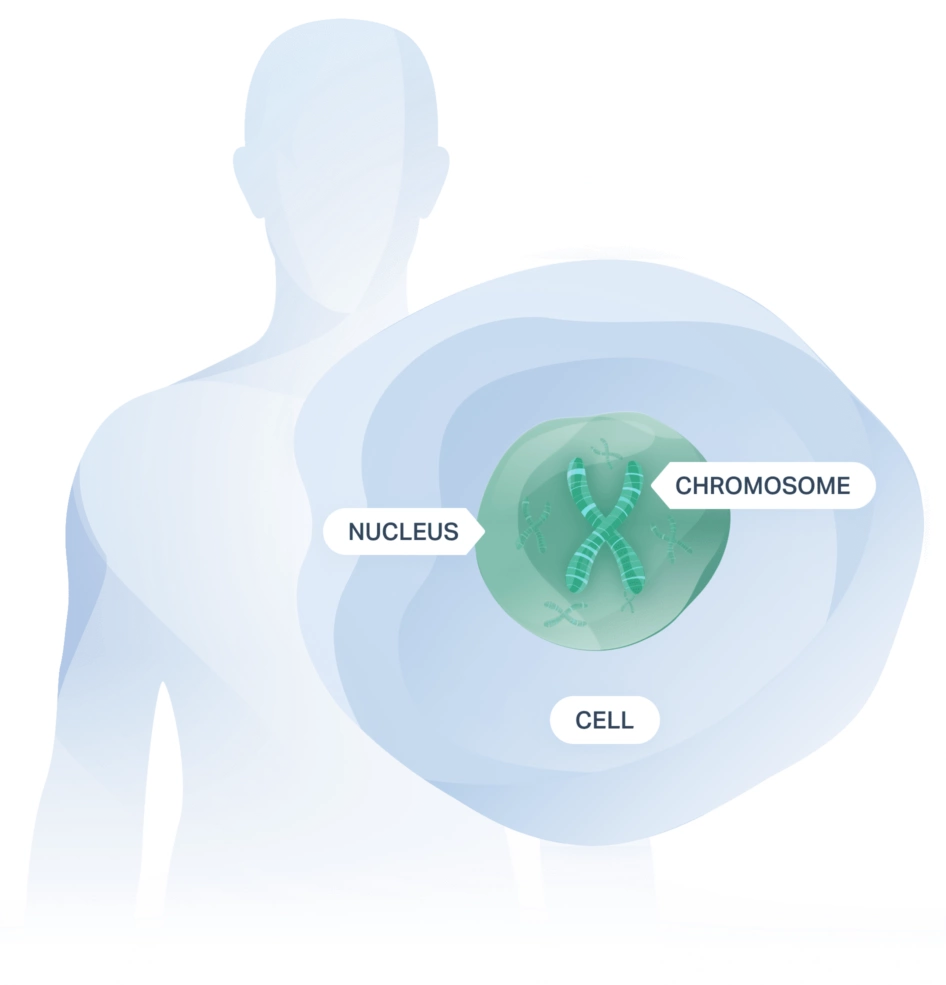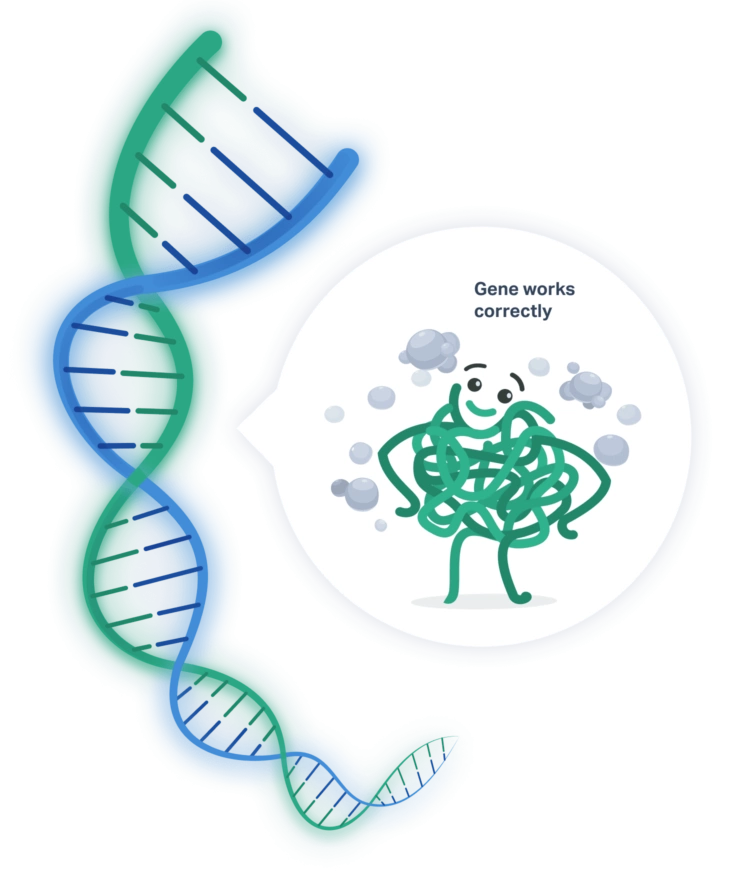About gene therapies
To better understand gene therapy, let's first talk about cells in the human body
The human body is made of trillions of cells that work like small factories. These cells do important jobs, using materials and energy, to make products and help the body work like it should. Like a factory, most cells have a headquarters, called the nucleus, which controls the main operations of that cell.
The nucleus is also where important information is stored. This important information is a person's unique genetic formula, which is called deoxyribonucleic acid or DNA. DNA is organized into pairs of thread-like structures called chromosomes. Usually, every cell has 23 pairs of chromosomes.
Genes are pieces of DNA in the chromosomes that are responsible for determining everything from physical traits, like eye color, to how our bodies work every day.
One important role of genes is to serve as instruction guides that tell cells how to make specific products such as proteins. Proteins perform many tasks to help bodies work properly, such as building and maintaining structures that make up the body, fighting off infections, and transporting materials across cells.
Genes are passed down, or inherited, from parents, so a person typically has two copies of each gene - one from their father and one from their mother.
It is believed that humans have between
20,000 and 25,000 genes!
How do genes impact disease?
There are two ways genes can play a role in causing or increasing risk of developing a disease:
1. Pathogenic variants
Sometimes, a change can happen in a gene, which may cause it to give different instructions – affecting how the protein is made and works. These changes are called variations or mutations. Gene variations can be inherited, occur as people age, or be caused by the environment.
The effects of variations can vary widely: some variations may not lead to any noticeable differences or problems, while other variations can cause or heighten the risk of developing genetic diseases. These types of disease-causing variations or mutations are called pathogenic variants.
2. Genetic isoforms associated with
disease risk
Some genes have isoforms, or subtypes, that are associated with different outcomes. Depending on the isoform a person inherits, they can be at an increased risk of developing a disease or having a worse outcome with a disease. These negative outcomes are not due to a pathogenic variant.
This is where gene therapy comes in
The goal of gene therapy is to help treat, prevent, or cure genetic diseases that people inherit or acquire by focusing on the root cause. Some of the ways gene therapy can be used to achieve this goal is by:
-
delivering a gene that works properly (functional gene) to the cells that have a version of that same gene with a disease-causing pathogenic variant

-
delivering a different form of the gene with protective effects that may overcome the harmful effects of the inherited isoform























































